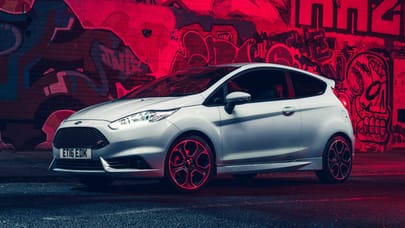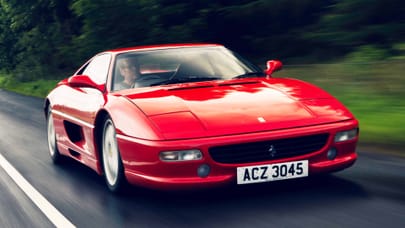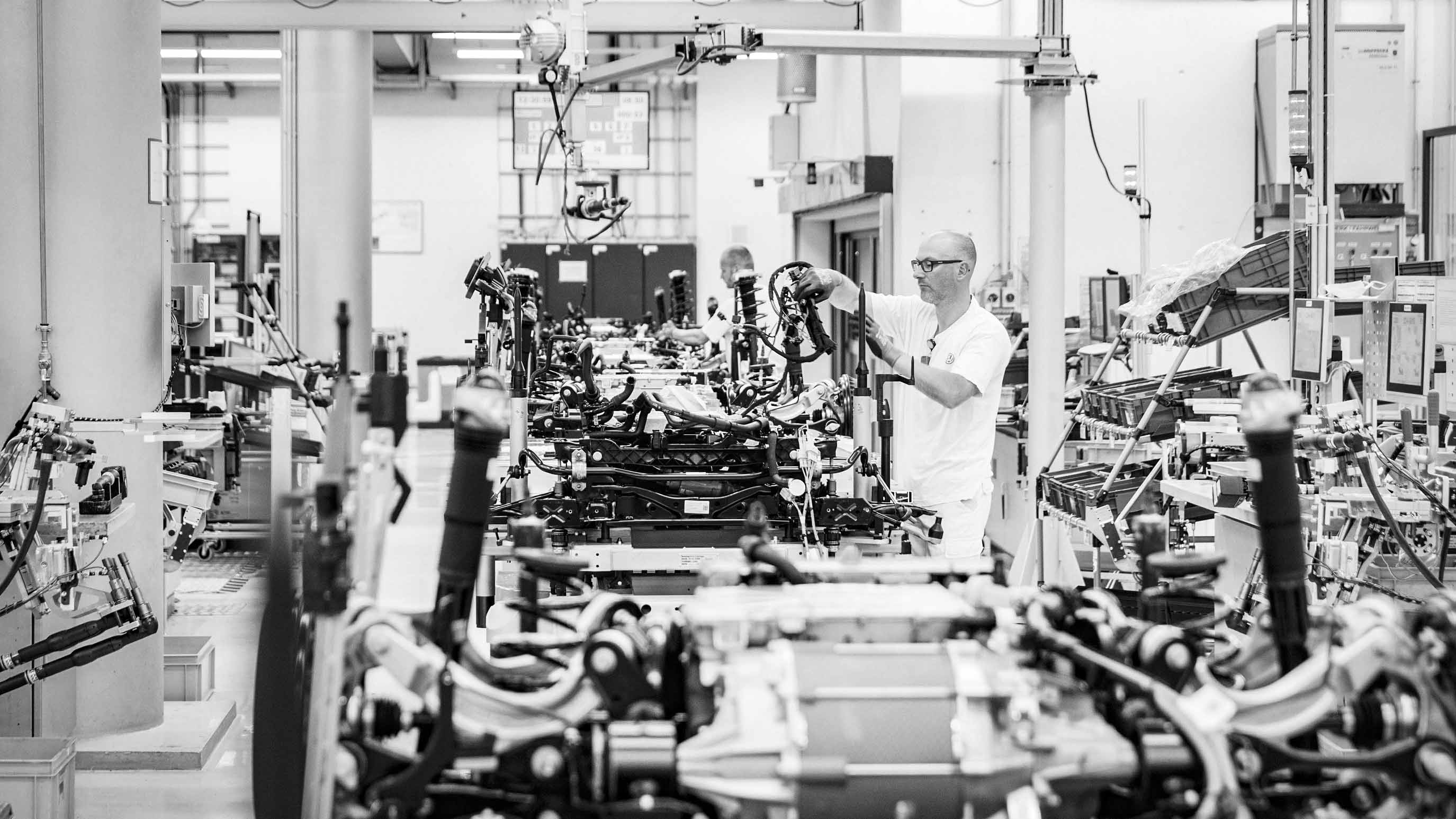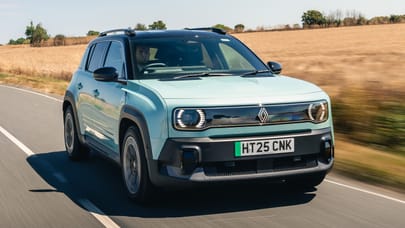
Can this small, cheap electric car save Volkswagen?
In its recent history, VW has struggled with some existential questions. Have lessons been learned with the ID.EVERY1 concept?
This little car has a big, big task. From 2027 the production version should reinvent Volkswagen, literally from the bottom up. To you and me it’s just a car – a smart one and, at £18,000, a cheap one. To Volkswagen it’s much more: redemption. VW’s electric story so far has very much had its ups and downs, and the downs have been painful and self-inflicted.
The story arc begins when Dieselgate broke, back in 2015. VW was already planning bespoke electric cars, even if we saw no evidence until the ID concept in autumn 2016. Since the first Golf, VW – despite dark beginnings under the Nazis – always thought of itself as a force for good, a big employer making sound people’s cars, boosting the economy. The diesel scandal showed a malevolent side, and it wanted to regain the high ground. The ID cars were to be the route, and they were fast tracked.
Too fast. Software woes meant they launched late and unfinished. Germany’s biggest corporations do autos, finance, utilities. The country has produced no great software or data company. I suspect that’s because of a second ugly period in the country’s history. After the postwar split, the communist party’s all pervasive internal intelligence network, the Stasi, relied on hundreds of thousands of civilian informants. Neighbour spied on neighbour.
Photography: Wilson Hennessy
Since reunification, a deep cultural attachment to privacy still remains. Start any German car and the screen won’t come on until you’ve prodded a data sharing agreement button. And so, in 2015 when VW wanted to design a range of connected EVs, it couldn’t find the software talent.
Besides, those ID cars were developed in the industry standard way, just as a Golf is. VW sets the basic design requirements, and then ‘tier 1’ suppliers take responsibility for separate systems. Bosch the engine management, Continental the braking, ZF the chassis, Magna this, Valeo that. The actual car manufacturer is in many ways an integrator and assembler.
But a connected EV is defined by its software, and all systems have to run one common OS designed by one set of engineers: battery management, motor control, power and regeneration, as well as embedded connected navigation for charge planning. The early ID cars were a patchwork, not a weave. And the patches came unpicked.
The early ID cars were a patchwork, not a weave. And the patches came unpicked
The VW Group has since set up successive new software organisations and divisions, and kept dismantling or ‘reorienting’ them. Now it has a partnership with XPeng to develop software for its cars sold in China, and recently a multibillion investment in Rivian that will provide software for VWs in the rest of the world in future.
Meanwhile, to be fair, the in-house system is getting better and more reliable. The screen freezes Top Gear suffered in pretty well every VW Group car – EV or ICE – from about 2020–2023 have now largely stopped, and ID cars on the road have been updated. Indeed, Silke Bagschik, chief of the ID line, told me that after the update rollout, they thought their customer fault reporting system had gone down. Because no faults were reported.
Top Gear
Newsletter
Thank you for subscribing to our newsletter. Look out for your regular round-up of news, reviews and offers in your inbox.
Get all the latest news, reviews and exclusives, direct to your inbox.
There’s more though. The VW brand itself is a huge business that makes barely any money – two per cent margin – and has peered over a precipice of mounting future costs and brutal Chinese competition. Painful negotiations with the unions have now got agreements to shut production lines and two small factories in Germany, cut the German workforce by 35,000 by 2030, do without wage increases for five years, and in the process aim to save £3.4 billion a year midterm.
Some of these problems were down to VW’s failure to be lightfooted enough, others affected the whole industry. Even so Bagschik admits VW in Europe isn't yet able to cost match the Chinese. “We need lower prices on energy and raw materials,” and she talks of a level playing field – likely code for tariffs.
So if people are going to buy VWs against all that backdrop, they’d better be attractive. Was the ID.3? A facelift has improved it, but its launch design was a space age pod for virtue signalling early EV adopters, and its interior an unpadded cell with flaky infotainment.
So, redemption, then... for Dieselgate, for bad software, for a high cost base that brings high prices, and for design that sadly lacks the reassuring solid friendliness a Volkswagen should have. The ID.1 bears a lot of weight, or weights, on its shoulders.
Well, I call it the ID.1. Volkswagen calls this concept the ID.EVERY1, and by production time it might be called ID.UP!, because the Up is the car whose role and spirit it inherits. Equally, what’s now the ID.2all concept may well be called ID.Polo when it hits showrooms next year. If the ID.EVERY1’s name changes, its shape won’t. The shape and proportions and purity – well, once you’ve added windscreen wipers and normal doorhandles – will stay. VW design boss Andy Mindt is adamant. “Everything we show now is the exterior.”
It shares with the Up that clever quality of looking like a real VW, but simpler and more cheerful than the bigger ones. This little golden block is, says Mindt, “a completely friendly car. The face is really human with human eyes". He points out how the eyes, the headlamps, have deep lit borders so the bulb always looks like it’s in the centre of the lamp as you walk around the car. “Like the Mona Lisa, it’s always watching you. It’s a bit spooky.”
Between the lamps is a black panel. Mindt didn’t want an expressionless body colour strip. “This is friendly, not super cool, not about killing zombies.” But black plastic is otherwise banished. “There’s no decoration on it, no additional parts. No light bar. No cladding on the doors or sills, no matte black. And this saves money, which we put it into other things like bigger wheels. It’s a self confident car, so you never feel underdressed.”
The body has a terrific stance, approachable yet monolithic. The wheelarches are immaculately surfaced, and Mindt points out they’re deep above the wheels – visually pulling the wheels out of the body – yet lower down the doors are less waisted because that helps cut drag. Because it’s a four seater, the roof has a central channel, which also reduces drag, plus it stiffens the panel so there’s no need for supporting structure. Cheaper, lighter, better. The single tailgate panel is simplified, avoiding covers for the opening button or numberplate light, as they’re tucked under the bottom edge.
It’s a self confident car, so you never feel underdressed
It’s a simple two-box outline, with a surprisingly long flat bonnet. Mindt says this makes the car look chunky and safe, reassuring for parents who buy baby cars for their neophyte driver kids. Black-painting the A-posts does the job of visually lengthening the cabin and emphasising forward motion. The upright screen avoids having a big glassy oven in front of the car too, he points out, with the air of a man who was somewhere else – anywhere else – when the shovel nose ID.3 was designed. But then, the first ID cars were shaped to announce their new age drive. The new ID cars, Mindt’s ones, are shaped to announce that they’re VWs.
Inside, it’s simple too. But in their cabins more than their exteriors, production cars tend to migrate away from their concepts. So let’s not assume WYSIWYG. But we learn from Mindt that the plan is for an undressed cabin in the base versions becoming more lavish in higher trims or with mountable accessories.
Below the central screen are a physical volume knob and temperature buttons. Yup, VW is rowing back on its widely lambasted all-screen interface. “Let’s say our usability concept so far was heavily criticised by customers.” The screen will have some permanent icons and a flat menu structure. Besides, cars this size are used as pool and hire cars, with unfamiliar drivers. No one wants to land on holiday and spend two hours jabbing at a screen before they manage to leave the airport car park.
Different cabin layouts suit the three main users – the young on their first car, the old on their last, and shared users like healthcare workers or delivery drivers. It’s patronising to assume baby cars are just city cars or second cars. Hence the target of 155+ miles of range, and quick charging too.
The ID.Up, ID.Polo and a crossover too, plus a Cupra and Skodas, will use a new FWD platform. That frees up space in the back for a deep boot and a lockable bay under the back seat cushion for charge cables and, say, a laptop. More importantly, FWD saves cost, bundling all the electronics and high voltage wiring at one end.
These cars share some mechanical and electrical parts with the bigger rear motor VW EVs, but the ID.1’s 95bhp motor is new. So is the 38kWh lithium iron phosphate battery, a cost saving but robust chemistry in a compact lightweight cell to pack construction. This will be the first car to use that Rivian-VW software. The rear suspension is a torsion beam, not the more expensive multi-link of the bigger cars.
Yes, low manufacturing costs really matter here. VW wanted to do a baby EV but didn’t know if there was profit in it. So 600 of its engineers went into a room to scratch their heads for cost savings, and VW only gave this car the go-ahead when it’d found enough. Bagschik says for a buyer, the monthly cost, with lease payments and fuel, of the littlest ID will match a petrol baby car.
She’s not a fan, by the way, of an ICE ban. “There’s no need. People get hooked on EVs once they try them. No one wants to take anything if it’s mandatory.” We’d be Up for this one.
Trending this week
- Car Review
Volvo ES90














